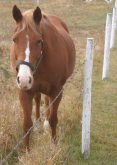Poor nutrition, reproductive tract infections and bull performance can be linked to conception failure
A cow’s overall condition affects its ability to become pregnant and deliver a healthy calf.
“The bottom line is we need to get our cows cycling at the start of the breeding season and we need to ensure we get those conception rates to achieve herd fertility,” said Cheryl Waldner of the Western College of Veterinary Medicine at the University of Saskatchewan.
Problems and recommendations for better herd reproduction were presented in a recent Beef Cattle Research Council webinar.
Field research examined 64,000 records from 90 western Canadian cow herds between 2014-16. It showed about six percent of cows did not get pregnant. Average herds also reported that 8.5 percent of heifers were open with a range from zero to 24 percent of young females failing to conceive.
Read Also

Beef check-off collection system aligns across the country
A single and aligned check-off collection system based on where producers live makes the system equal said Chad Ross, Saskatchewan Cattle Association chair.
This failure can be linked to factors such as poor nutrition, reproductive tract infections and bull performance.
As well, the decision among many producers to calve later in the season has shown to lead to decreases in pregnancy rates.
Researchers have seen lower open rates in cows bred in May and June compared to herds that breed earlier in April or in July or later.
“The difference is not huge but it is significant and it is something we need to think about,” she said.
“We are maybe pushing our cows harder, asking them to get pregnant in the summer grazing season,” she said.
Stillbirths, including those that died within 24 hours of life were lower for cows bred in June, July and August compared to cows bred earlier.
Abortion rates are very low.
“There was no association between start of breeding season and risk of abortion. The abortions are low and not seasonally dependent,” she said.
However, the loss of a fetus could be due to something like bovine viral diarrhea.
Nutrition and body condition has a major impact on reproduction.
Current surveillance data from last year is still being analyzed but producers are questioning whether the 2017 drought could impact this year’s calf crop.
Data from the last severe drought in 2001-02 showed herds in the hardest hit areas were likely to have more stillborn calves.
Body condition scores were considered but researchers also speculated vitamin A deficiency may have been responsible for more dead calves at that time.
Body condition score is the bottom line for assessing nutrition in cow herds.
The Canadian system for ranking weight and frame ranges from one to five. The western Canadian study of about 30,000 cows shows cows range from two to four. Three is optimal.
Thinner cows are more likely to be open at pregnancy checking time.
Thin cows struggle to rebreed compared to the average to heavier females. Thin ones are more likely to abort.
First- and second-calf heifers and those older than 10 years were often thinner.
While a cow with a score of 3.5 is often considered to be on the heavy side, it is more likely to be pregnant than a three.
The heavyweight cows scoring a four or 4.5 did not show a decline in pregnancy rates.
Cows that were 3.5 and beyond were more likely to have a hard calving but they were not likely going to lose the calf.
“The ones we have got to pay attention to are these thinner cows that were twos or less. They were much more likely to have a hard calving than these cows that were a little bit heavier,” she said.
“Cows that were thin in pre-breeding or pre-calving were still more likely to be thin at pregnancy testing. They don’t always recover as nicely as we would like them to,” she said.
The importance of trace minerals like copper must also be appreciated.
This deficiency is common in Western Canada. The most deficient regions seem to be eastern Saskatchewan and western Manitoba.
Pregnancy rates and lower serum copper levels have been associated with higher open rates in cows younger than 10 years.
In 2014, blood tests on mature pregnant cows showed 43 percent were copper deficient.
Further tests in 2016 on young cows found 24 percent of those were deficient and 85 percent of herds had one or more copper deficient young females.
If the trace mineral molybdenum is present in the region, its ingestion can tie up copper. About 13 percent of cows in the survey had higher than recommended levels of molybdenum. They probably picked it up from feed and soil.
Sulfate and iron also tie up copper.
For supplementation purposes, there are different types of copper.
Chelated minerals are bound to something organic that improves absorption of the mineral. They are more expensive but for those having serious problems with low copper, or high sulfate or iron in the water or molybdenum in the soil, chelated minerals can be useful said Waldner.


















